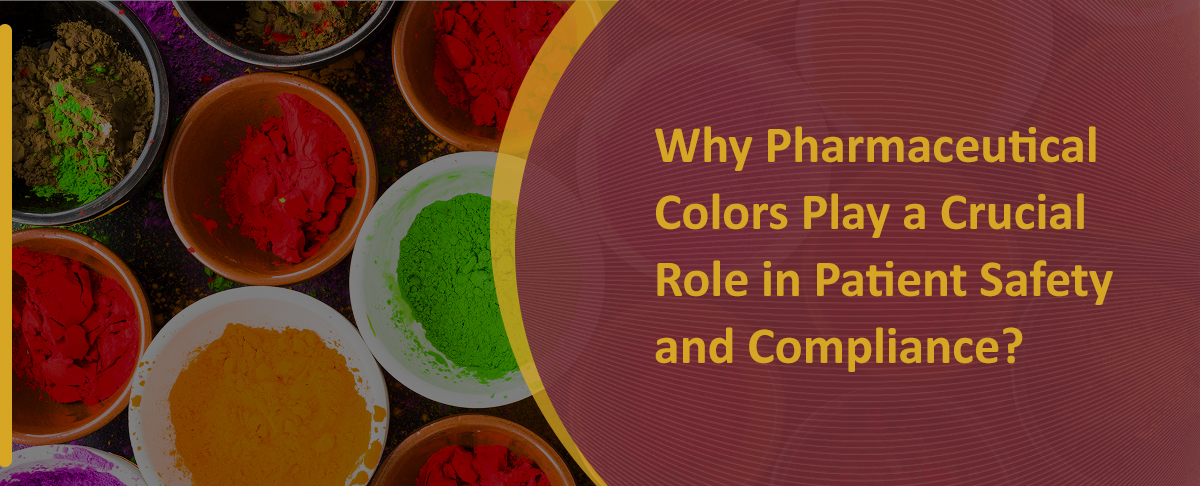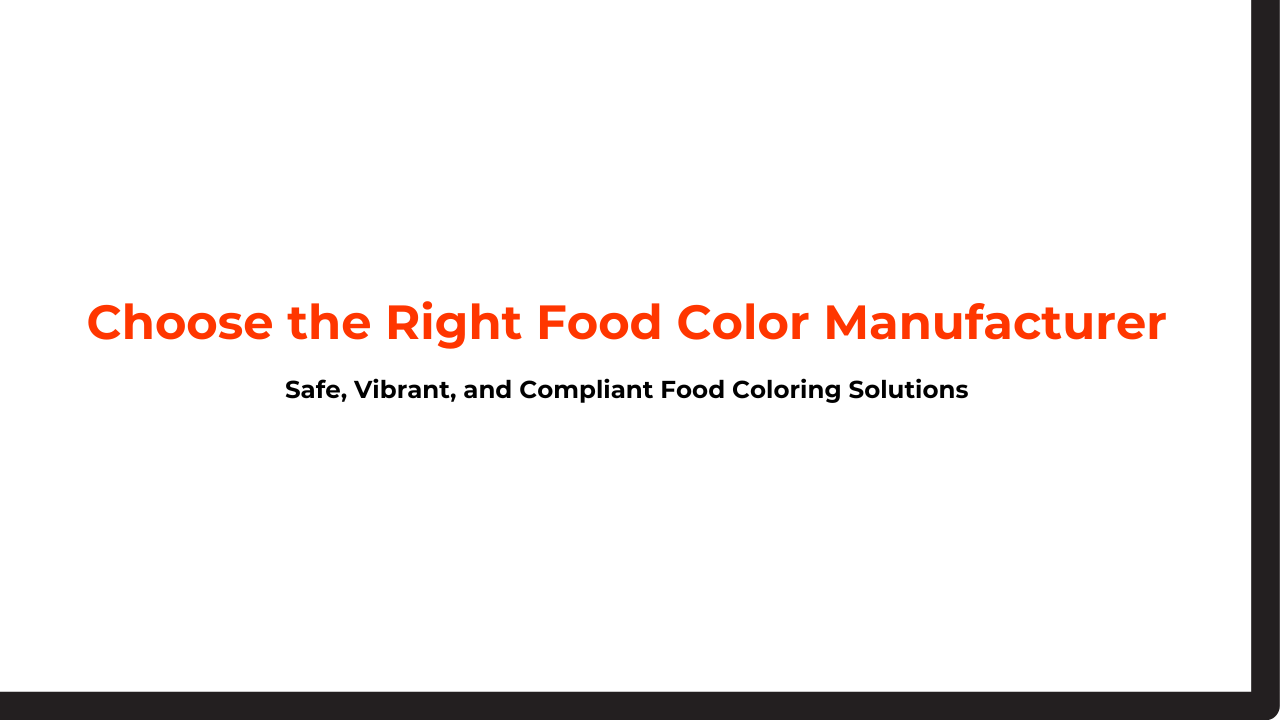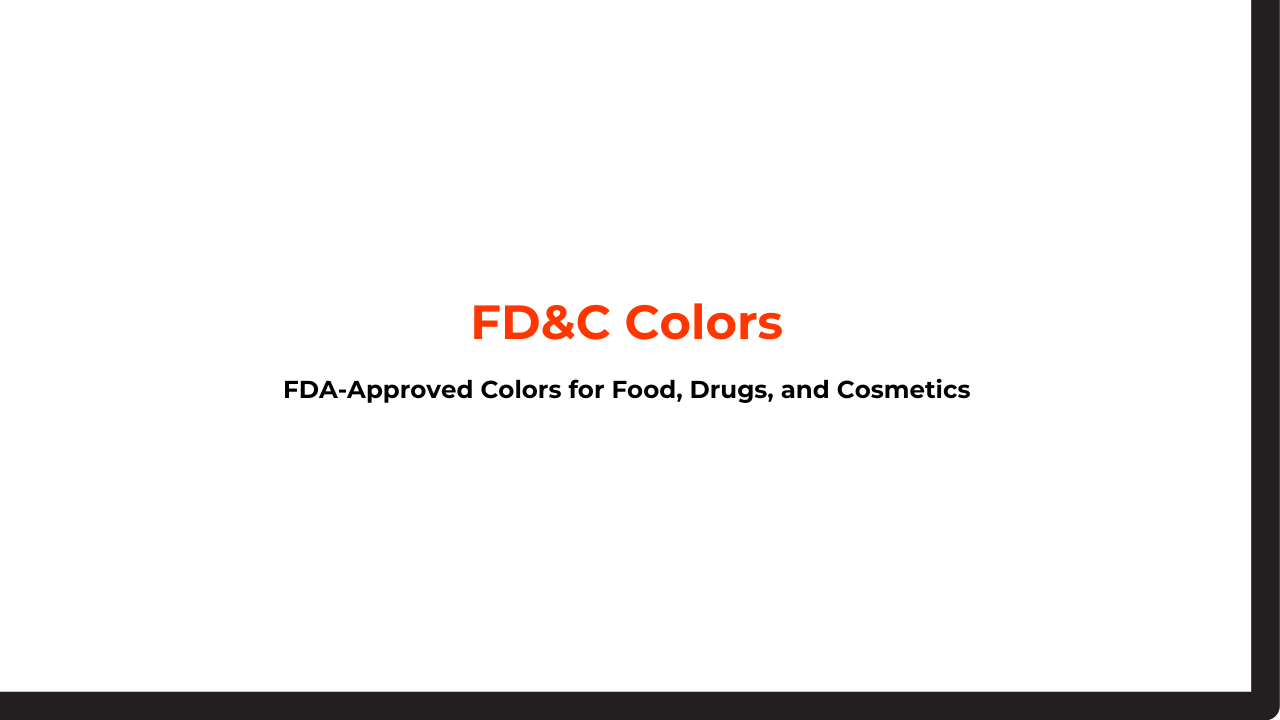Food dyes, also known as color additives, are used to provide color to different food products, including food and beverages, cakes, juice, confectionery items, sausage casings, baked goods, powdered drink mixes, candies, carbonated drinks, gelatin desserts, and many other foods. The use of FD&C dyes is worldwide due to their powerful capability to provide more vibrant colors and hues more effectively.
Food dyes are primarily used to improve the visual appearance, making the product more appealing. These colors or coloring agents are derived from chemically synthesized process ingredients, including natural colors, in a laboratory. Many food colorings or color additives are also used as coloring agents in different industrial applications, including cosmetics, drugs, and other products, like mouthwash and toothpaste.
All right! In this blog post, we will discuss all food dyes or synthetic ones used in the food & beverage industry. So, let’s dive right into the various kinds of artificial food dyes currently used in foods.
What are Food Dyes?
A food dye refers to any color additive, dye, or pigment used to impart color when applied to foods, cosmetics, or pharmaceuticals. Food dyes, also known as food colorants, coloring agents, or color additives, are used to provide various colors and hues or shades to different foods, drinks, and various edible items. These food dyes are found in multiple forms, including liquids, powders, gels, and pastes.
The use of food dyes or coloring agents is widespread in both home cooking and industrial applications. They provide an enriching and appealing look that makes food more attractive than ever before.
Why are food dyes essential?
There are numerous reasons why food dyes are being used in different applications, including but not limited to:
- Impact various colors, hues, or shades to make food more appealing and attractive.
- It eliminates the amount of color loss caused by light, air, extreme temperature fluctuations, humidity, and storage conditions.
- Help people determine products through their visual appearance, including confectionery flavors.
- Take into account the natural variations in color.
- To decorate various food items.
All dyes currently used in food.
Four primary groups of plant pigments are explicitly grown to color food products. Four main groups of plant pigments are grown for coloring food products. However, a few of these pigment groups include carotenoids (E160, E161, E164), chlorophyllins (E140, E141), anthocyanins (E163), and betanins (E162).
Colorants or derivatives of these fundamental groups may include the following:
- Annatto (E160b), a reddish-orange dye derived from the seed of the achiote.
- Carmine (E120), is a red dye derived from the cochineal insect, Dactylopius coccus.
- Caramel coloring (E150a-d), is derived from caramelized sugar.
- Turmeric/curcumin (E100).
- Lycopene (E160d).
- Elderberry juice (E163).
- Paprika (E160c).
Artificial/Synthetic Food Dyes
Erythrosine or Erythrosine B, called Red No. 3, eosin B, or food additive E127, is a xanthene dye used for coloring a comprehensive range of foods. Erythrosine B is widespread for numerous food & beverages, including candies, popsicles, and cake-decorating gels. Further, it is an approved food coloring in the United States, the European Union, and Indian markets.
It is also primarily used for coloring sweets, including candy, popsicles, and cake-decorating gels. The numbering system under which it can be found is as follows:
- FD&C Red No. 3
- E number E127 (Food Red 14)
- Color Index No. 45430 (Acid Red 51)
- Bureau of Indian Standards No. 1697
1. Tartrazine
Tartrazine acid is an organic salt of tartrazine that contains trisodium. It is an azo dye analogous to a hydrophilic anionic dye. This color is also known as Yellow 5 Lake and Food Yellow 4. However, tartrazine triggers allergic reactions in asthmatic or aspirin-sensitive individuals and has been banned in various countries, such as Sweden, Norway, Switzerland, and Austria.
These food dyes are widely used food colorants that are certified & approved for use in food in the United States and India.
- FD&C Yellow 5
- E number E102 (Food Yellow 4)
- Color Index No. 19140 (Acid Yellow 23)
- Bureau of Indian Standards No. 1694
2. Allura Red AC
Allura Red AC is one of the most popular dyes used worldwide. It was initially introduced as a replacement for amaranth, but it has now been FDA-approved for use in cosmetics, medications, and food. It is listed under the following number systems:
- FD&C Red No.40
- E number E129 (Food Red 17)
- Color Index no. 16035
This famous Allura Red AC dye is widely used in various applications, including—but not limited to—children’s pharmaceuticals, tattoo ink, cherry-flavored products, cotton candy, soft beverages, and dairy products.
3. Sunset Yellow FCF
Sunset Yellow FCF, also called FD&C Yellow No. 6, is approved and permitted for use in coloring pharmaceuticals, cosmetics, and foods with a recommended dosage of 3.75 mg/kg. It refers to an azo dye extracted from petroleum, providing a comprehensive range of orange shades to foods and nutritional supplements. Sunset Yellow FCF is listed under the following number systems:
- FD&C Yellow 6
- E number E110
- Color Index no. 15985 (Orange Yellow S)
- Bureau of Indian Standards No. 1695
4. Brilliant Blue FCF
The brilliant blue FCF dye, also called Blue 1, is a triarylmethane dye. It is an approved food colorant in the USA and the EU. It is one of the earliest FDA-approved color additives, and its principal use is as a blue coloring agent in processed foods, pharmaceuticals, dietary supplements, and cosmetics. Brilliant Blue FCF is generally regarded as safe, chemical-free, and non-toxic. It is listed under the following number systems:
- FD&C Blue No.1
- E number E133 (Food Blue 1)
- Color Index no. 42090 (Acid Blue 9)
- Bureau of Indian Standards No. 6406
5. Indigo Carmine
Indigo Carmine, also called Indigotindisulfonate Sodium, is an organic chemical derived from subjecting indigo to aromatic sulfonation. It is approved as a food dye to be used in food coloring in the U.S and E.U. to produce a blue color and is listed under the following number systems:
- FD&C Blue No.2
- E number E132
- Color Index no. 73015 (Acid Blue 74)
- Bureau of Indian Standards No. 1698
Conclusion
The bottom line is that various FD&C dyes are approved and permitted for use in various industrial applications, including food, drugs, and cosmetics. The FDA regulates these dyes with stringent guidelines and safety standards to ensure they meet rigorous testing protocols and requirements. If you are a business interested in learning more about a comprehensive range of dyes used in food, we are here for you.
If you are a business seeking high-quality food dyes, look no further than Hridhan Chem. Hridhan Chem is a leading manufacturer and exporter of premium-quality synthetic dyes and pigments in India. Don’t be shy—get in touch with us today!




